Biophysics (Elasticity)
1/53
There's no tags or description
Looks like no tags are added yet.
Name | Mastery | Learn | Test | Matching | Spaced |
|---|
No study sessions yet.
54 Terms
Elasticity definition
the property of an object to recover its original size and shape after removing the stretch force applied to it
An object that can' recover its original size is called
plastic
Definition of stress
T = F/A [N/m²]
Stress is the force applied by surface area. Units are Newtons by square meter
![<p>T = F/A [N/m²]</p><p>Stress is the force applied by surface area. Units are Newtons by square meter</p>](https://knowt-user-attachments.s3.amazonaws.com/1aaa235c-9a46-4df3-b27d-f1e58a6f0278.png)
Longitudinal or normal stress
Force is applied perpendicular to the surface (cross-sectional area). This force can be tensile or compressive
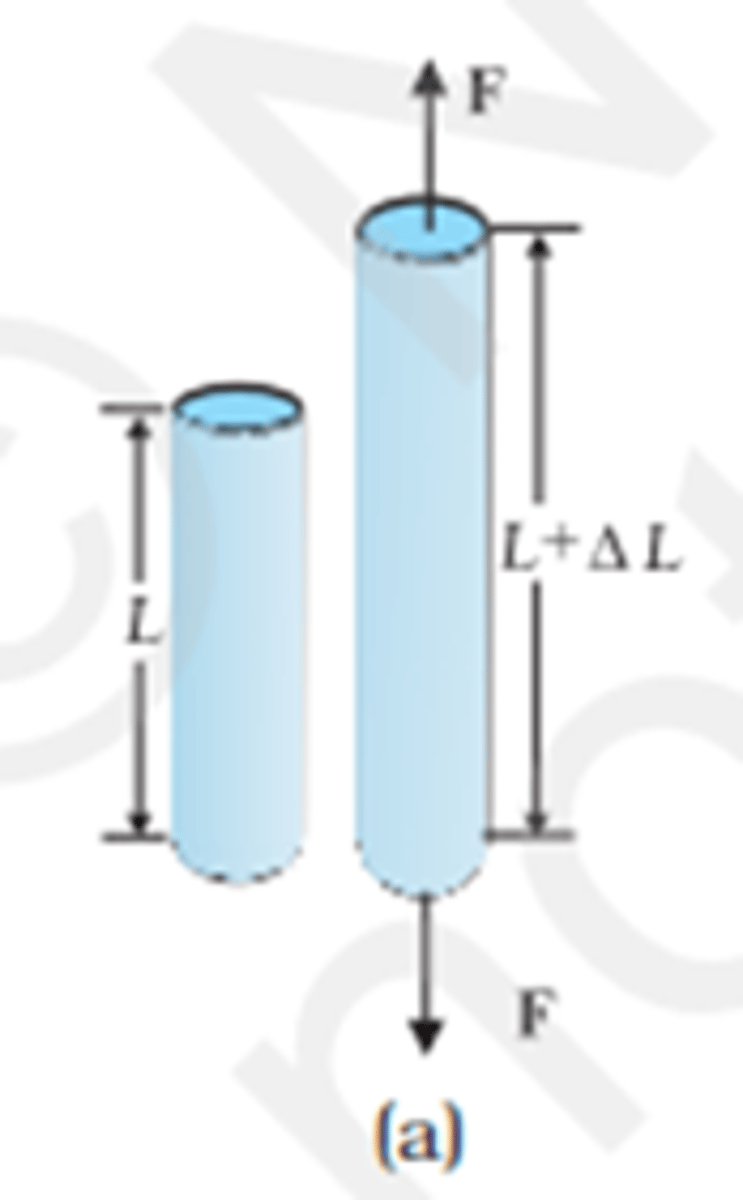
Longitudinal strain
∆L/L
Deformation by length unit. It is adimensional.
It is to measure or characterize deformation of materials with longitudinal strain

How many different stresses can happen in a solid?
6, 4 shear stress and 2 normal stress

Shearing (Cizalla) or longitudinal strain
The force applied is parallel to the cross-sectional area
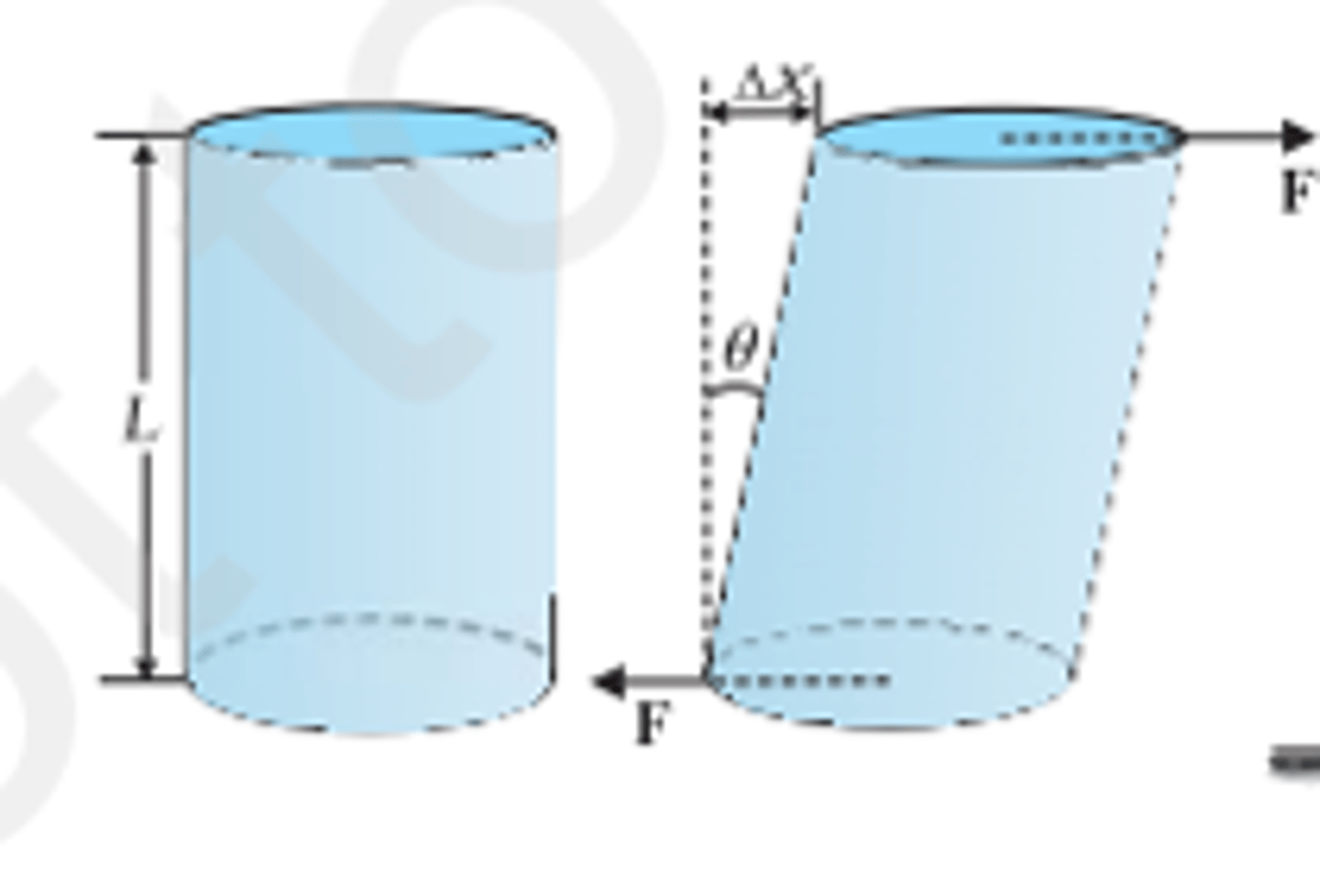
Shearing strain
Deformation applied by the force. It is used to measure deformation of materials with shearing strain
Shearing strain = ∆x/L = tan θ
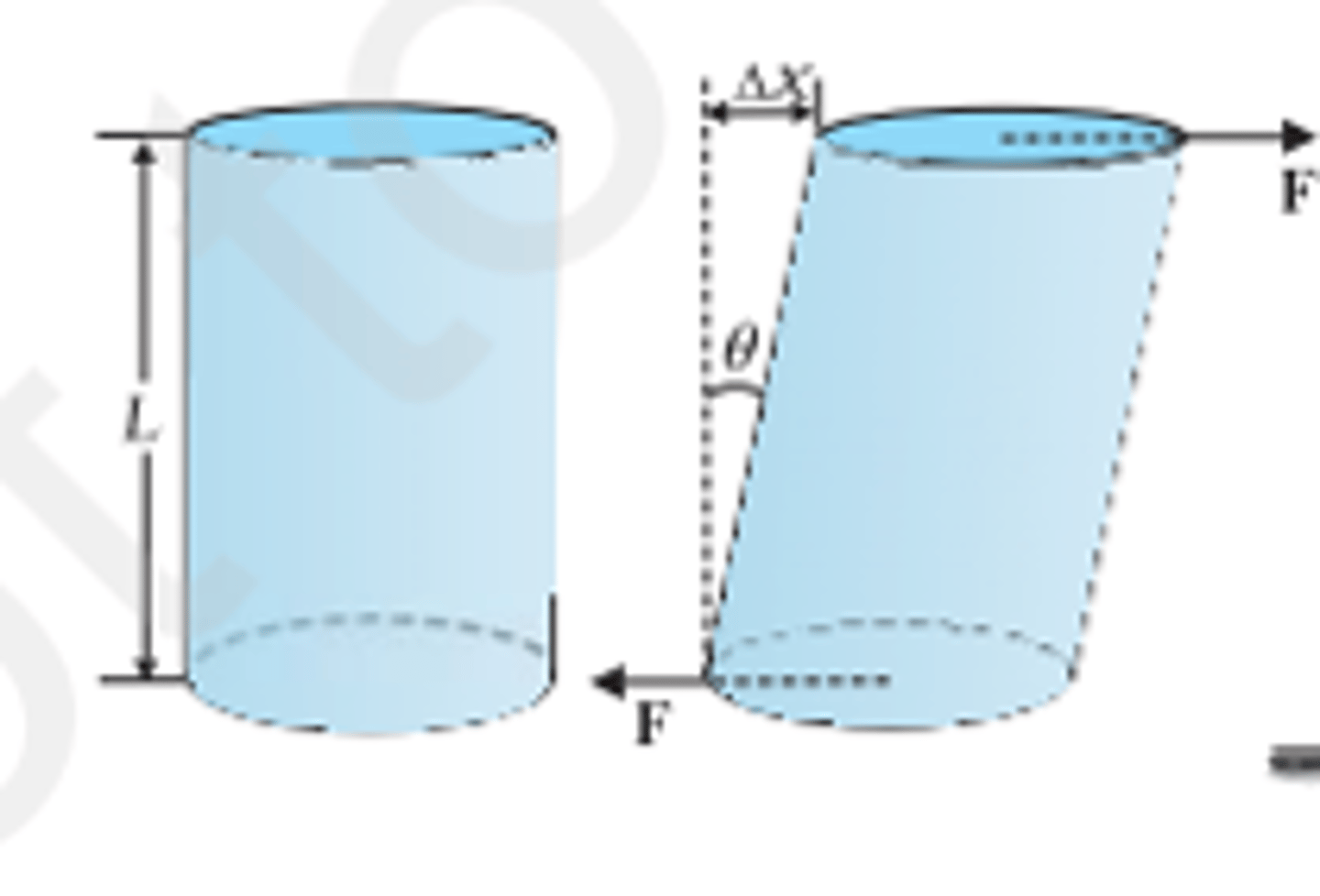
Hooke's Law
F = -Kx (K= spring const)
The stress is proportional to the elongation
Stress Curve
From 0 to point A -> stress proportional to the elongation. It applies the Hooke's law. Stress and strain are proportional.
In this area the body is elastic. It will recover original size and shape
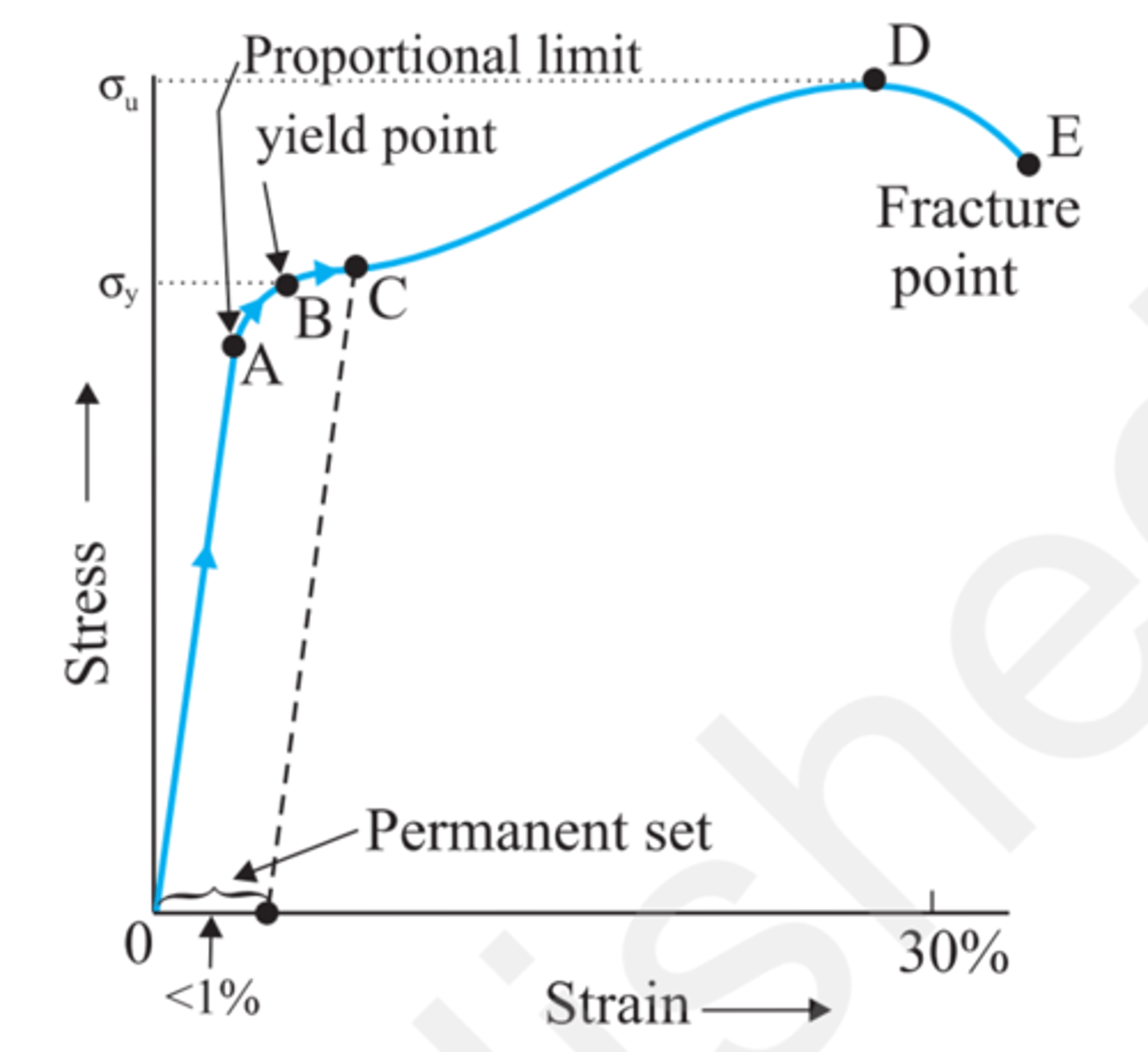
Stress Curve
From A to point B -> stress is no longer proportional, but it is still elastic. it will recover original size and shape
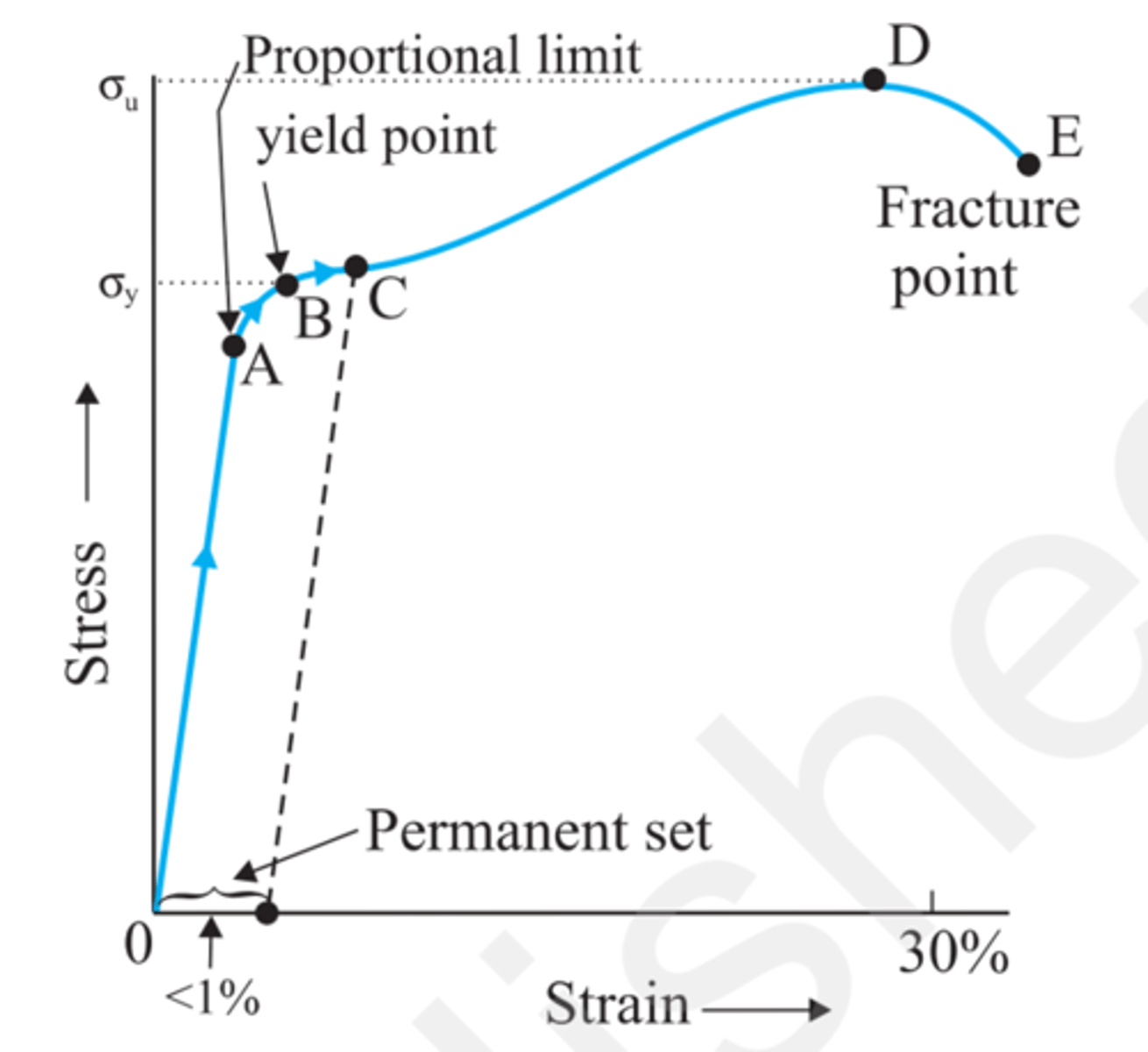
Stress Curve
From point B to point D -> small stress produces big strain. The body is in plastic area. It will no recover the original size and shape
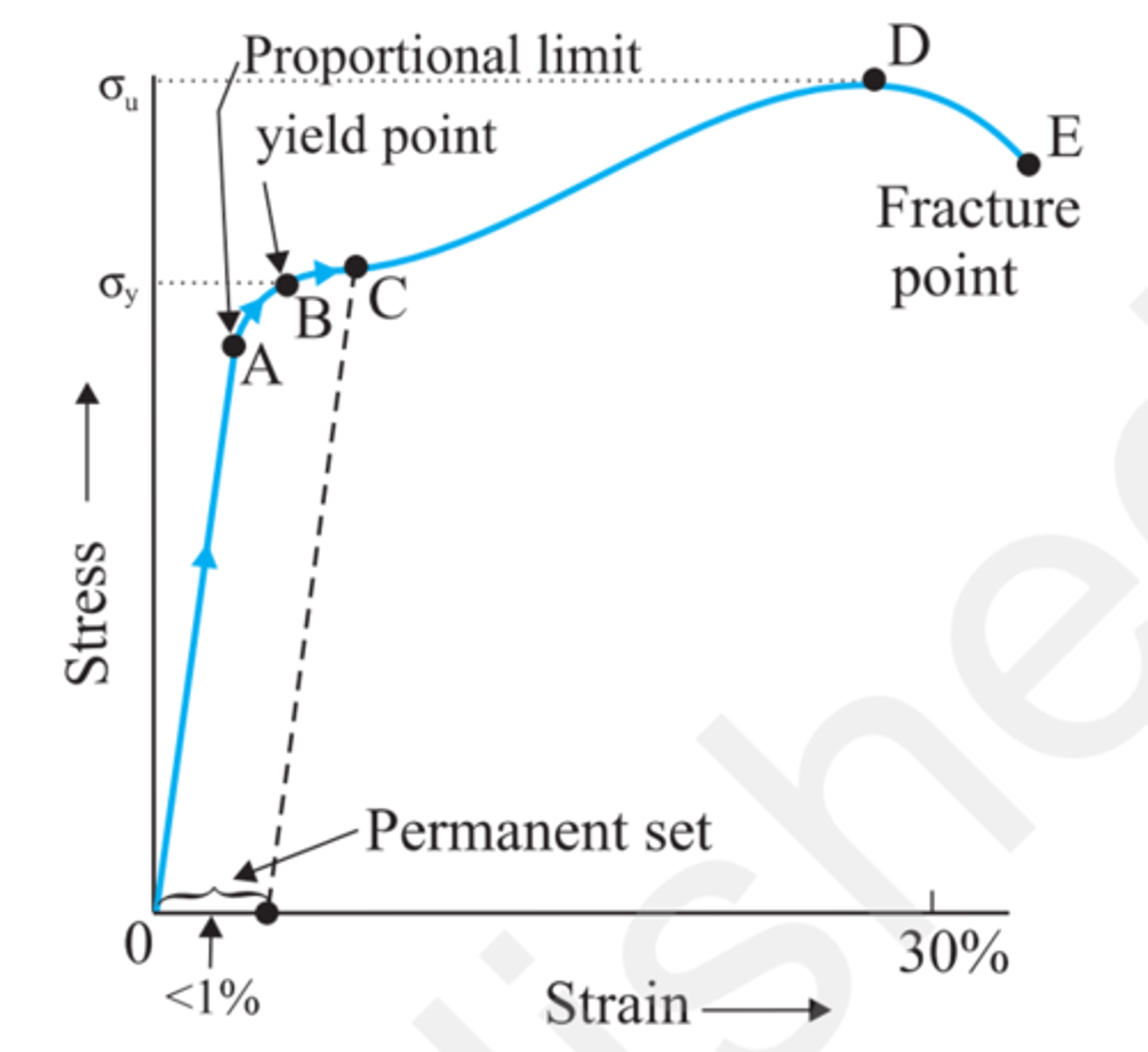
Stress Curve
From point D to point E -> even if stress is decreased there is still strain, until reach the breaking point
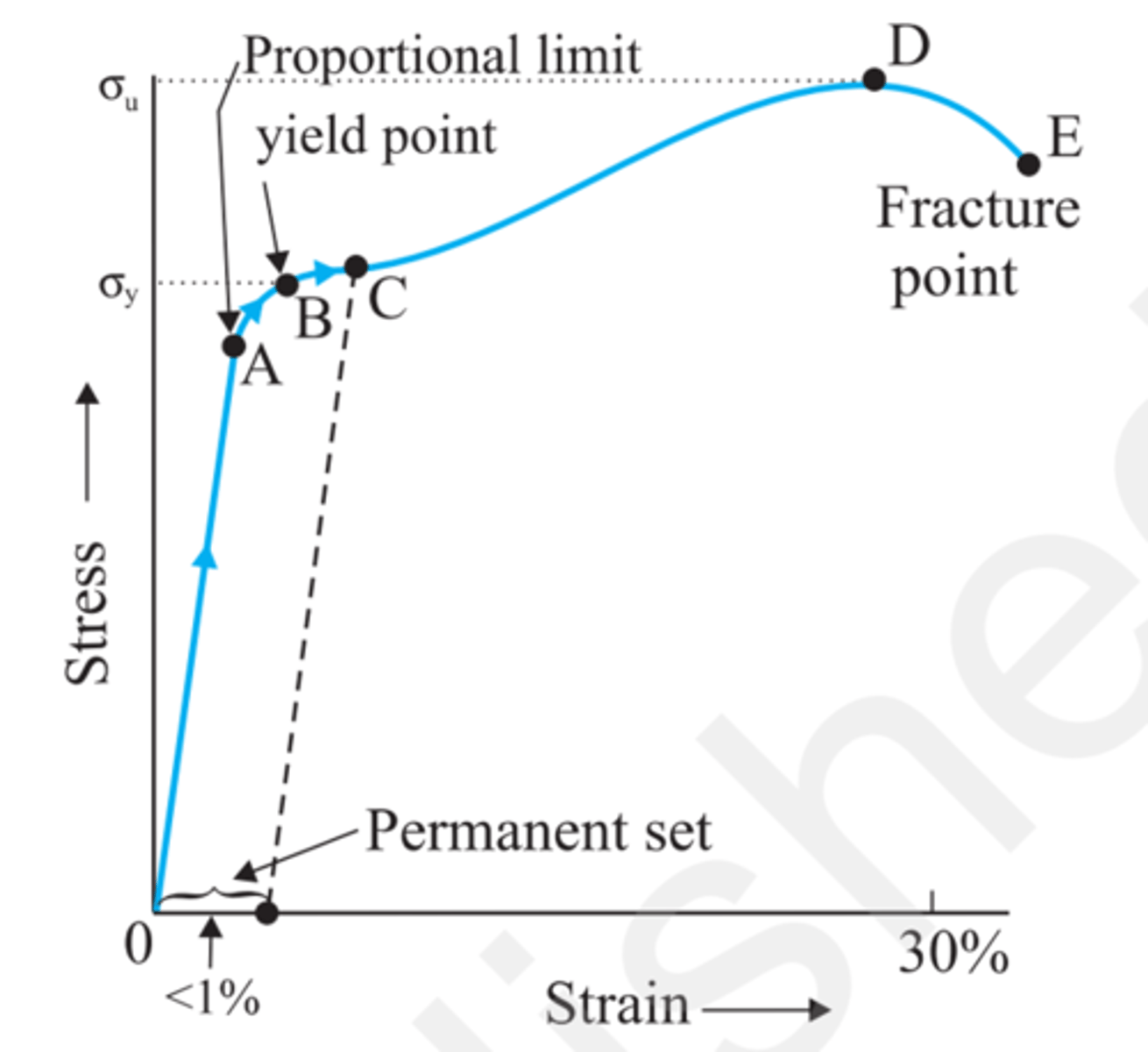
yield strength (σy)
Strength limit to reach the maximum elastic point. Strengths bigger than this the body will be in the plastic area and not recovering the elastic behaviour
At point B, we have the yield strength. The strain in this point is yield point of elastic limit
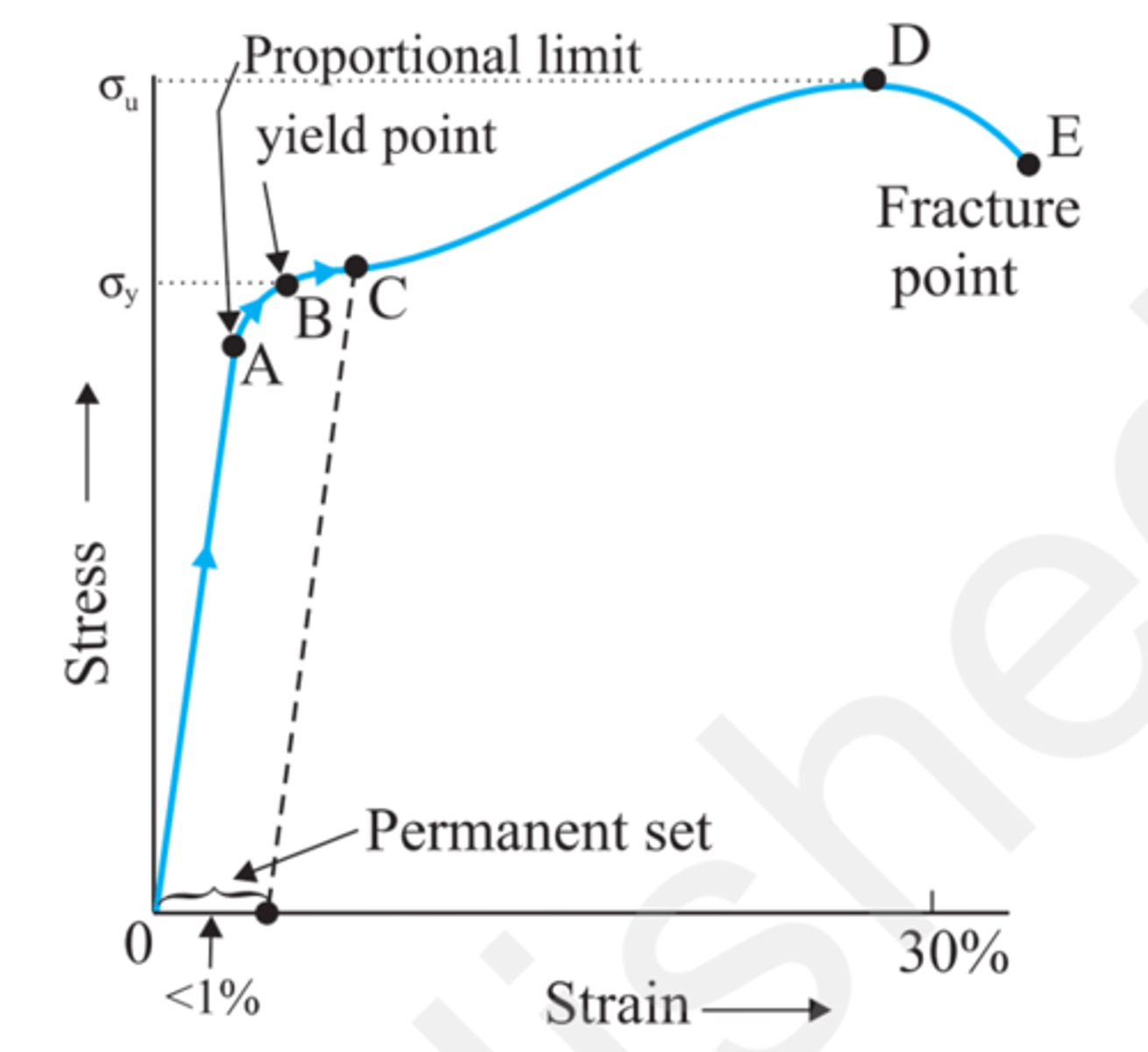
At point C we will achieve a permanent deformation of
1%
Parallel line to the elastic zone passing at point C

tensile strength (σu)
Strength limit in the plastic area.
Point D.
Strain is called tensile strength
Young's Modulus Stretching/Compression
The ratio of tensile (or compressive) stress (σ) to the longitudinal strain (ε)
It is measured in [N/m²]
Y = (F/A)/(∆L/L)
Young's Modulus is used to characterize elasticity of materials under longitudinal stress
Big Young's Modulus means that will be necessary a _____________ to produce a ______________ strain
big small
For an homogeneous and isotropic material, longitudinal and transversal Young's modulus are _______________
Equal
Order Young'' modulus of bones, ligaments and muscles
Bones > Ligaments > Muscles
Stress vs Young Modulus
T = Y (∆L/L)
Stress = Youngs' Module * (∆L/L)
Shear Modulus
The ratio of shearing stress to the corresponding shearing strain
G = (F/A)/(∆x/L)
G = σs/θ
σs= G θ
The shear modulus is used to characterize elasticity of materials under shear stress
Homogeneous Materials
The composition is the same in all the places
Isotropic Materials
The properties of the materials are the same in different directions
Brittle materials are having mainly
elastic zone. The crack point will be reach earlier
Characteristic of tensile stress on bones
. Properties along and across the axis are different (anisotropic)
. Stress and strain curves will be different for tensile or shear stress

Characteristic of tensile stress on ligaments/tendons
Three main areas:
. Toe (Región basal) -> small stress provokes big strain. Fibers at rest are folded. In this area they move from fold to parallel.
. Elastic area -> Fibers are unfolded and strain and stress are proportional
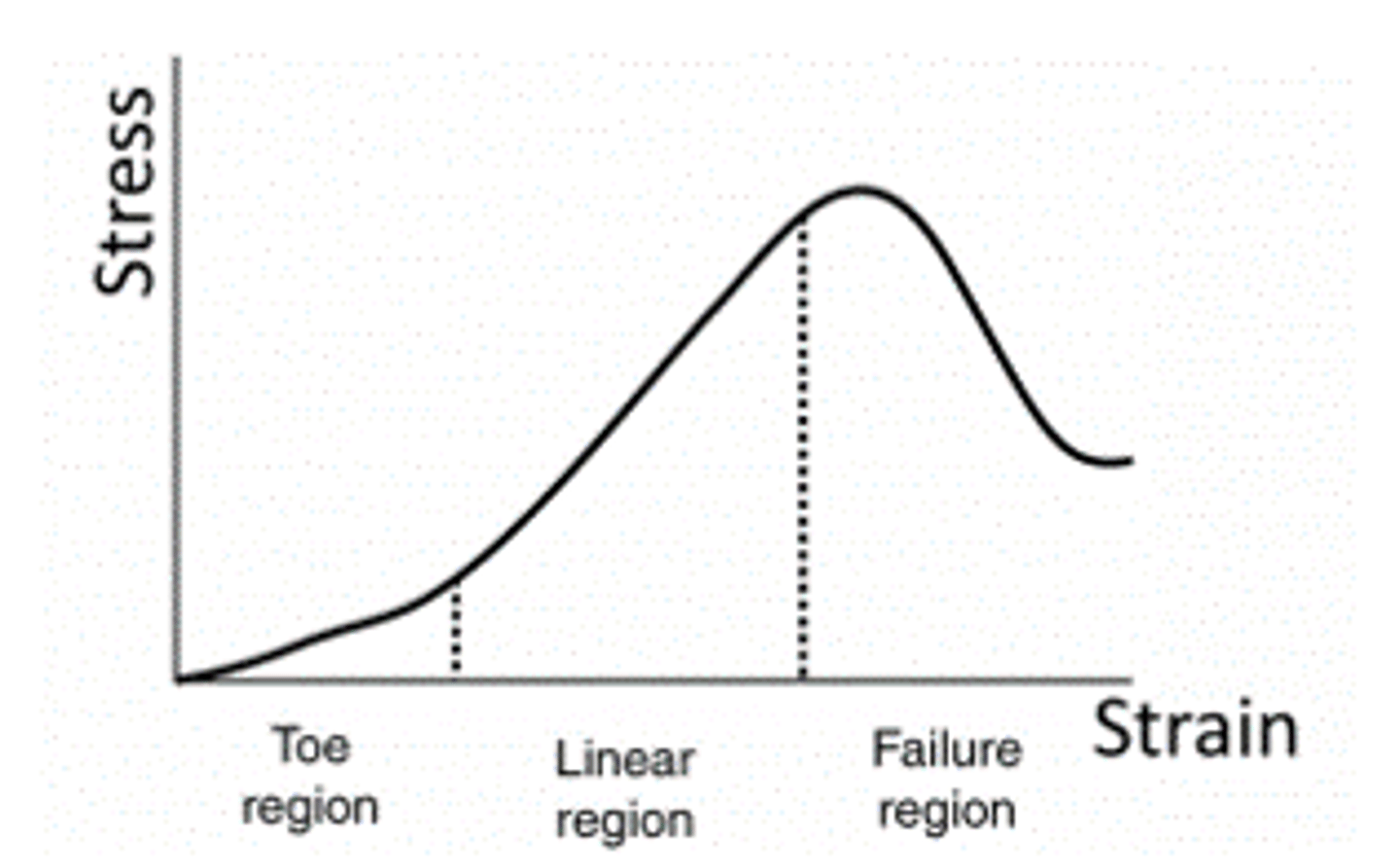
Characteristic of tensile stress on muscles
. In zone A, the muscle is not contracted. It behaves as a tendon/ligament
. In zone B, the muscle is contracted. The curve is shifted to the left.
With T=0 (no stress) the muscle length is lower than at rest (stress is negative).
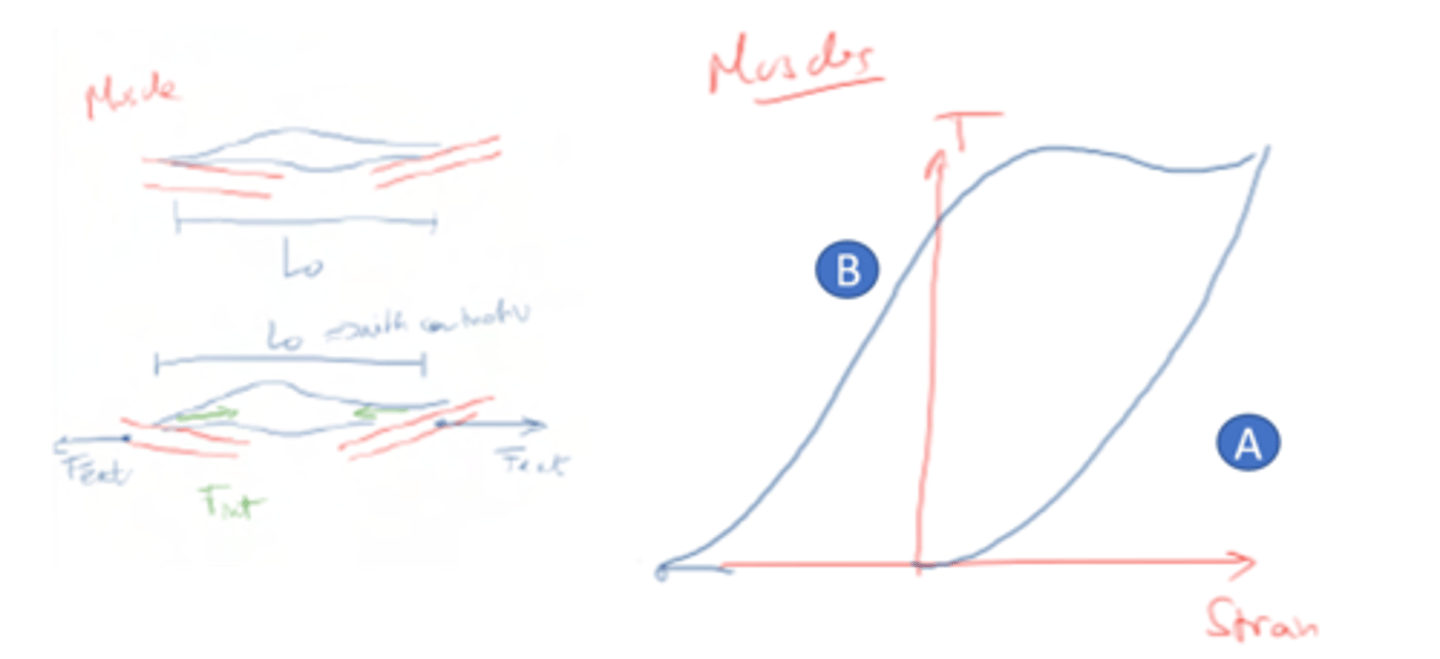
Elastoplastic materials
Both plastic and elastic regions coexist for the same stress.
Considered liquid materials (ie plasticine).
Poisson Ratio
It is the negative ratio of transversal strain or lateral strain to the longitudinal strain of a material under stress.
Poisson's ratio values are between -1.0 and 0.5 (theoretical) even most of materials are between 0 and 0.5

Poisson Ratio of zero means
There is no lateral reduction in diameter when the material is elongated but density decreases
Young Modulus and Poisson ratio are enough to describe the behaviour of a material?
Yes, if it simple (homogeneous and isotropic)
A fracture happens when
the stress force breaks the chemical bond and this propagates as a mechanical wave. The velocity of propagation is almost instantaneous.
Modes of fracture
2 for shear stress
1 for tensile stress
Compressive stress produces fracture due to the tensile stress provokes while pressing. So, iti is the tensile stress who is provoking the fracture
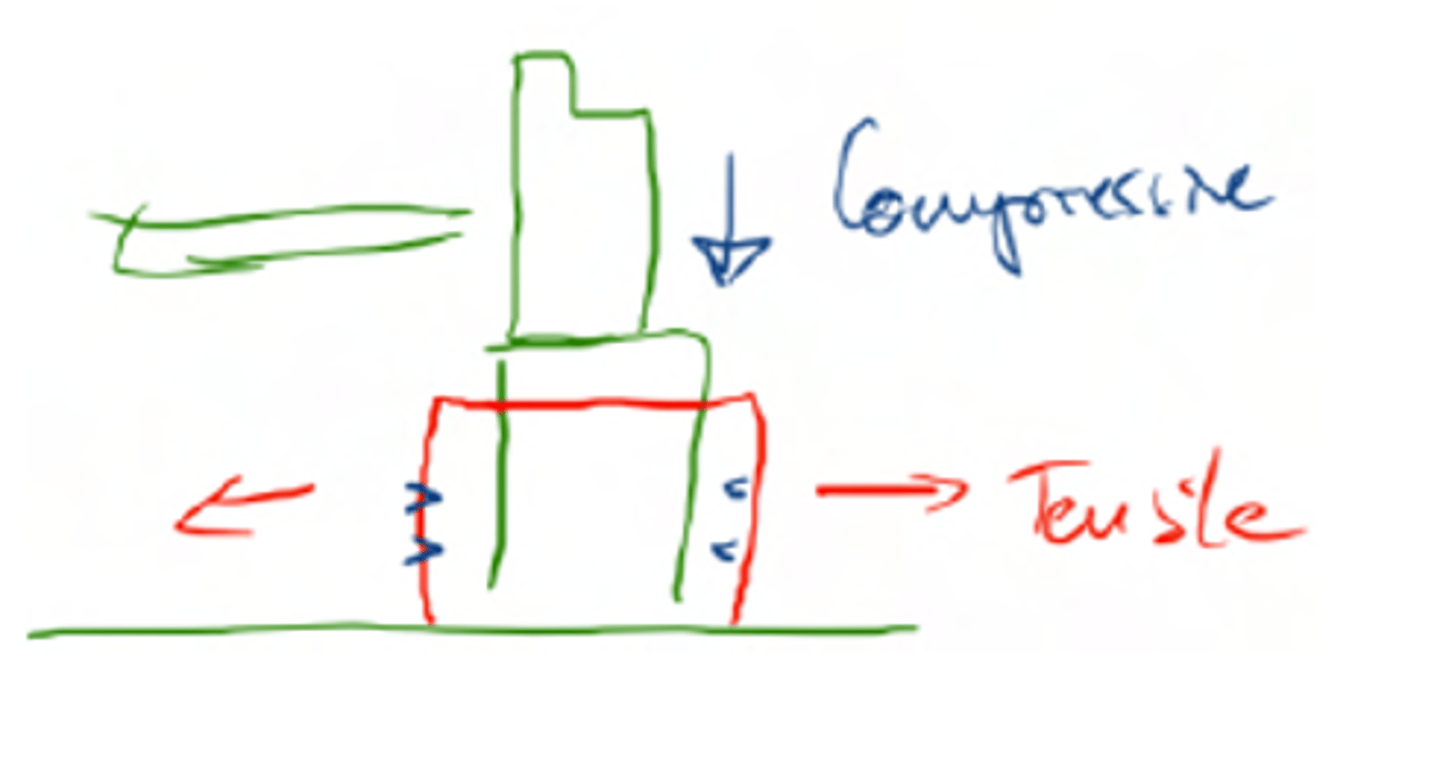
Fatigue
Material under repetitive stress every time resists less stress becoming weaker at every cycle.
In ligaments, in example, is due to some fibers that starts to be broken
To induce fatigue is necessary to cross the ____________________
Yield point (point defining the end of the elastic area)
The tension that a muscle can produce depend on the initial length of the __________________
Sarcomere
Sarcomere tension depend on the interaction between the ______________ and the _____________
actin myosin
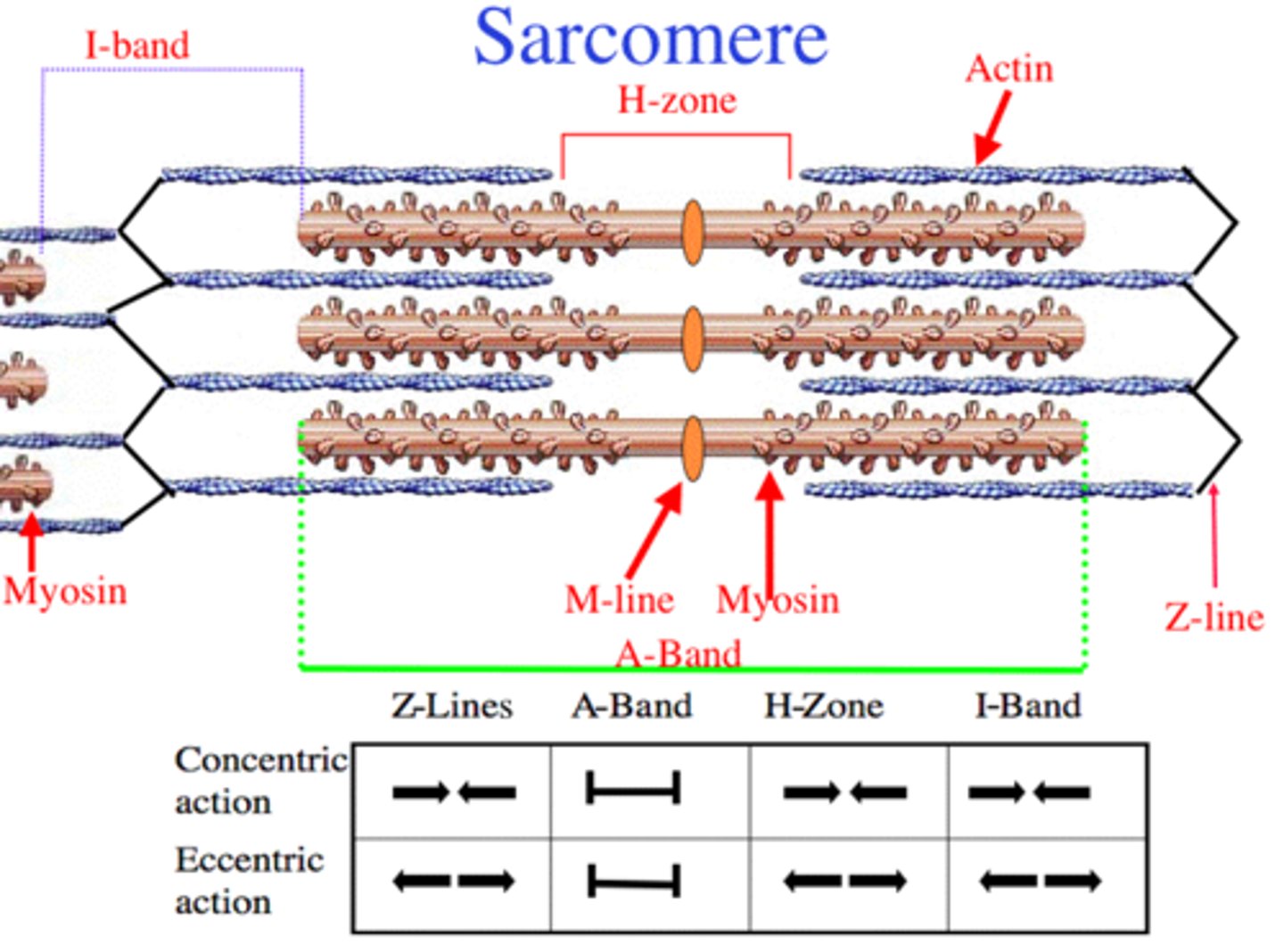
The longer the muscle the _____________ the total force/tension
greater
Muscle passive tension
It is due to the elastic behaviour of the muscle
Muscle active tension
The muscle is stimulated to control
Muscle tension vs length
Total tension (purple) = active (red)+ passive (blue)
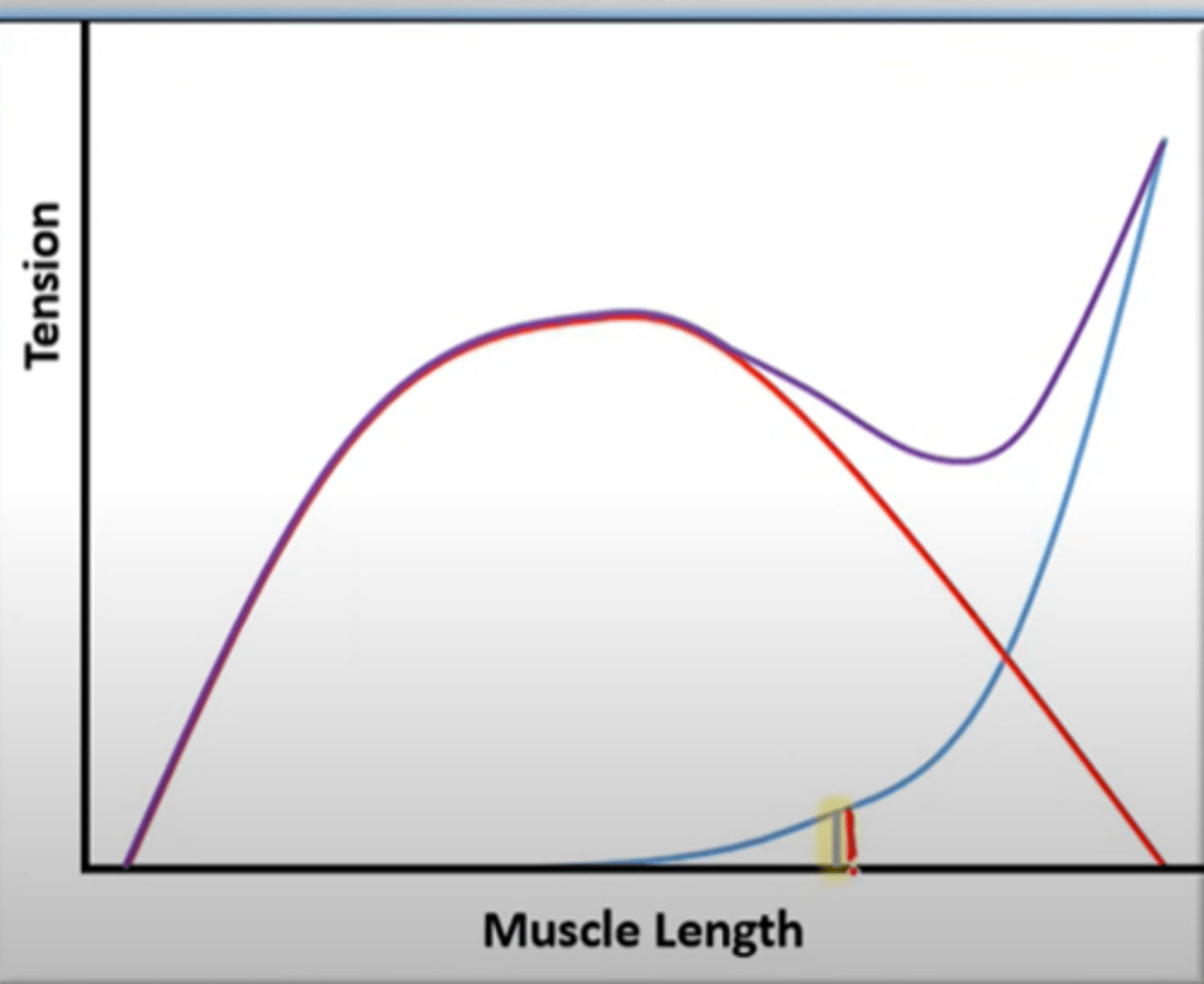
Sarcomers vs muscle length
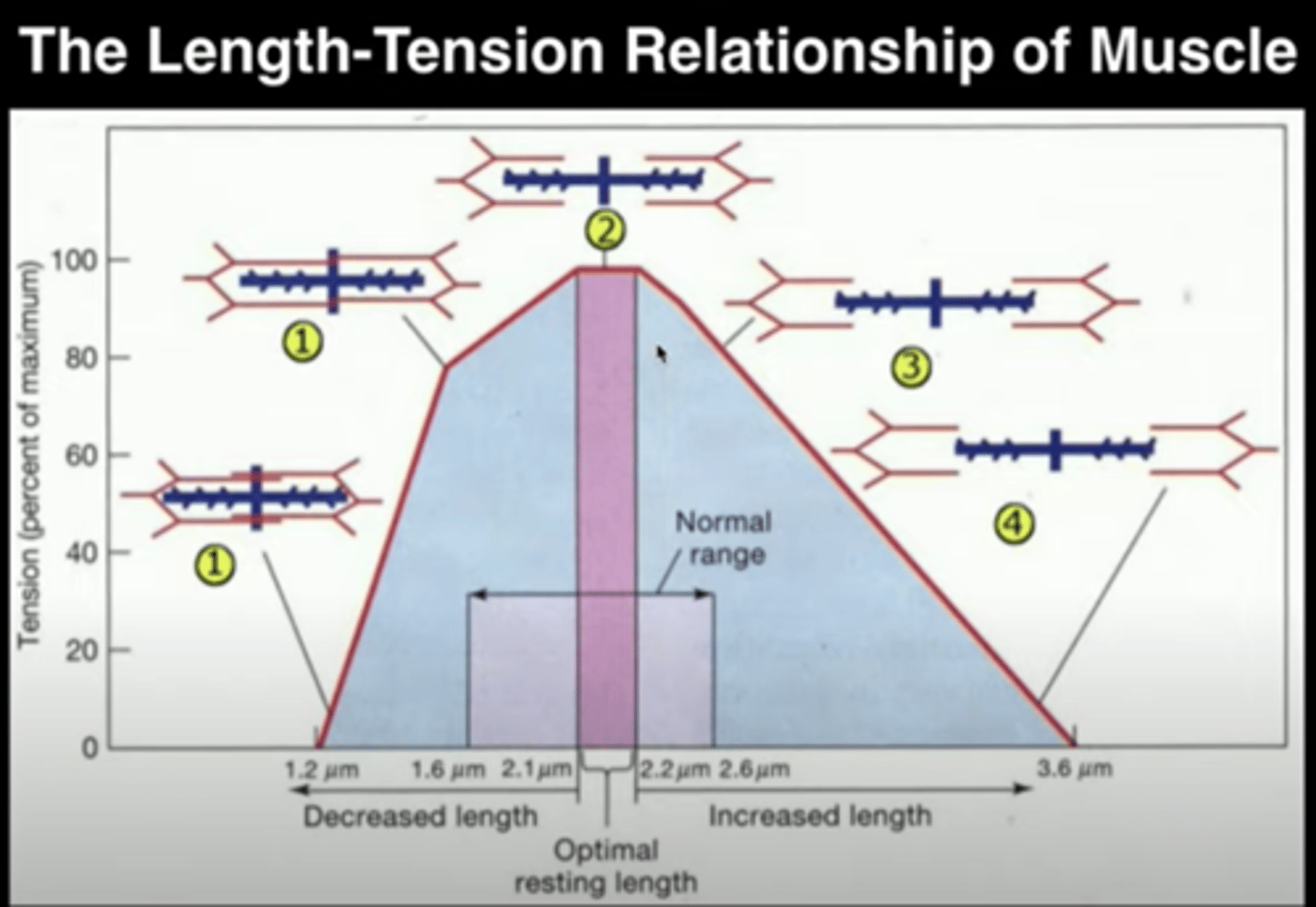
Fatigue happens when the strain points exceeds the ____________________
yield point
After exceeding the yield point and being under fatigue the stress needed to achieve same length is ___________________
lower
Bending a beam, the bending moment is proportional to __________________ and ____________________ and inversely proportional to the _________________
Young module, moment of inertia, radius
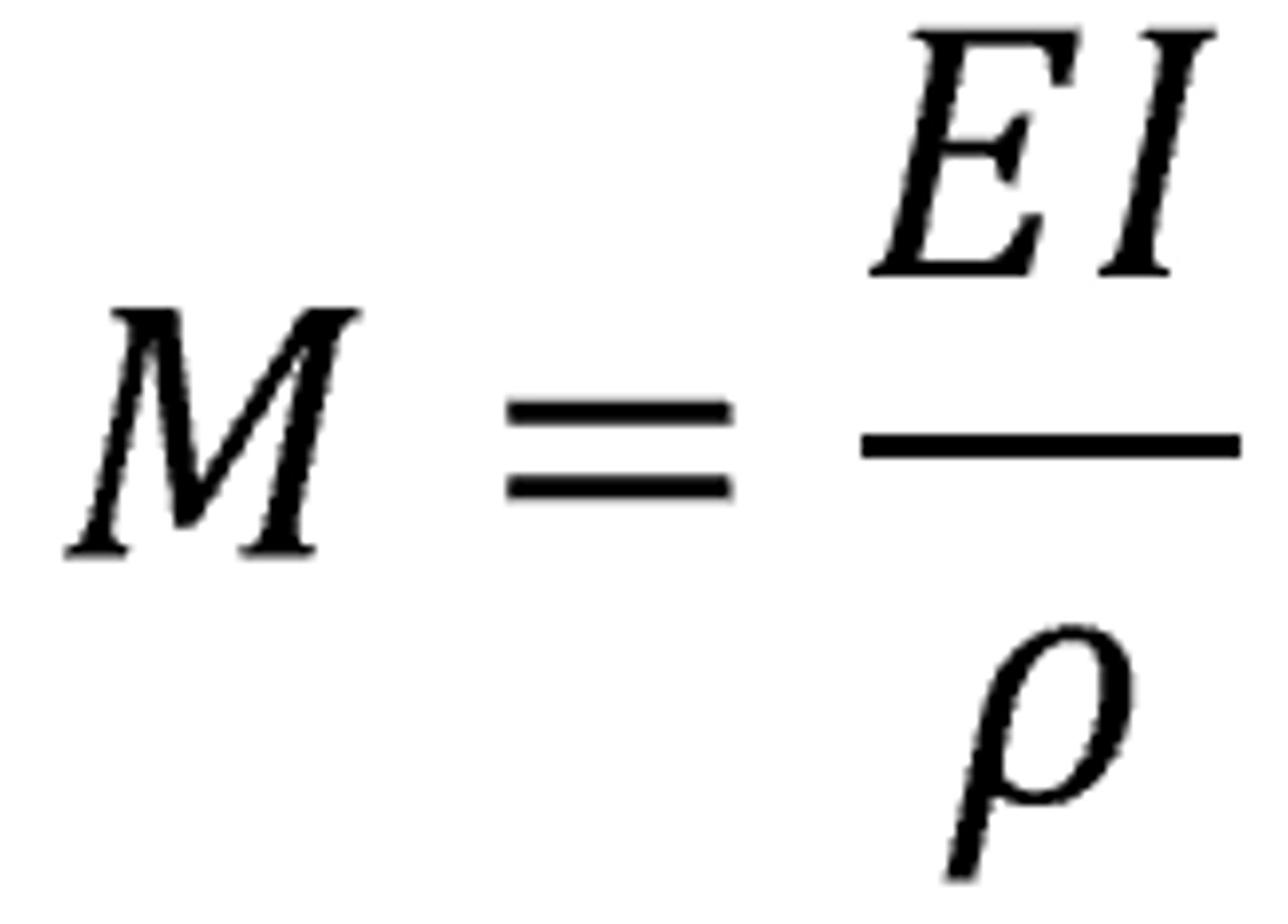
Torsion of a beam produces a torsion moment proportional to the shear module and shear momentum inertia and deformation
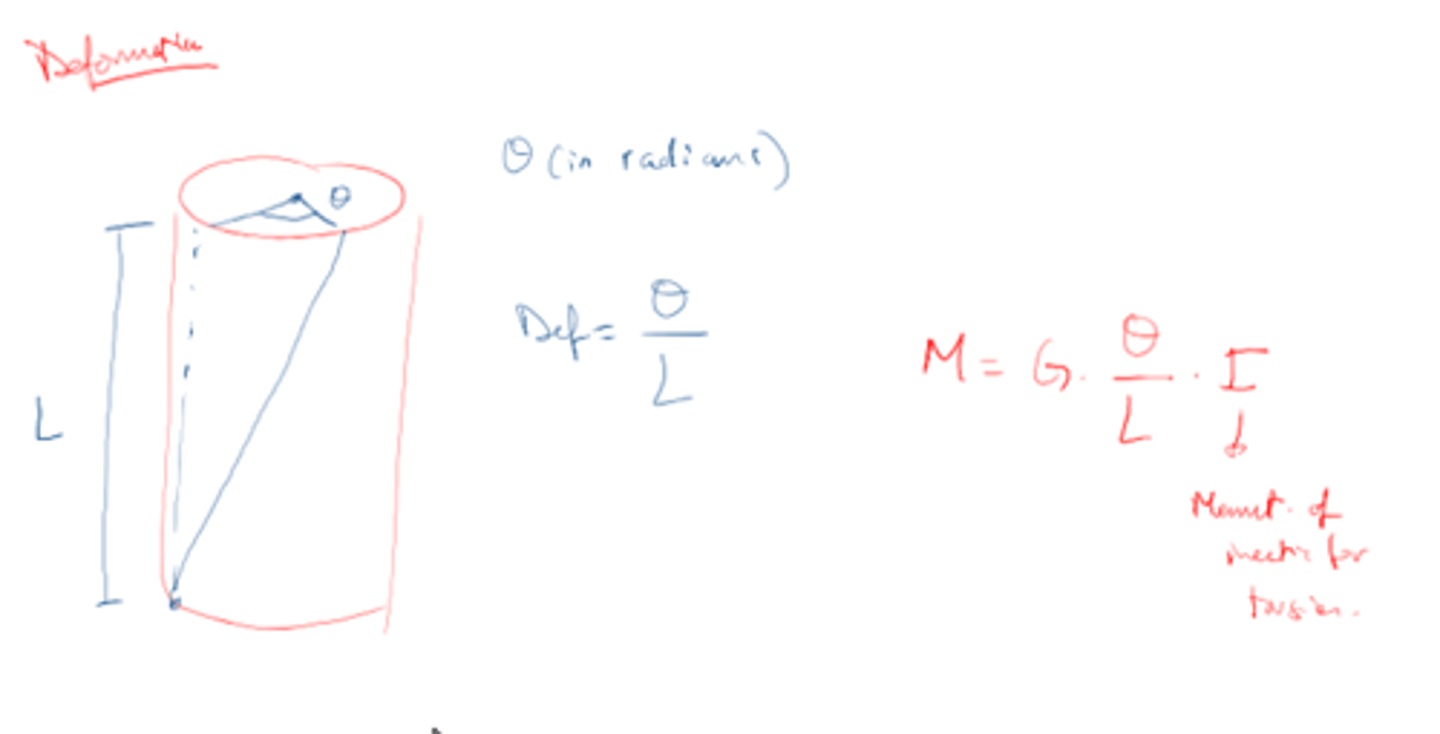
The higher the moment of inertia of a beam the _____________ the bending for an applied force
lower
Moment of inertia depends on the _______________ of the beam
cross section or shape
Laplace's law
The stress in a cavity is proportional to the pressure and the radius and inversely proportional to the thickness
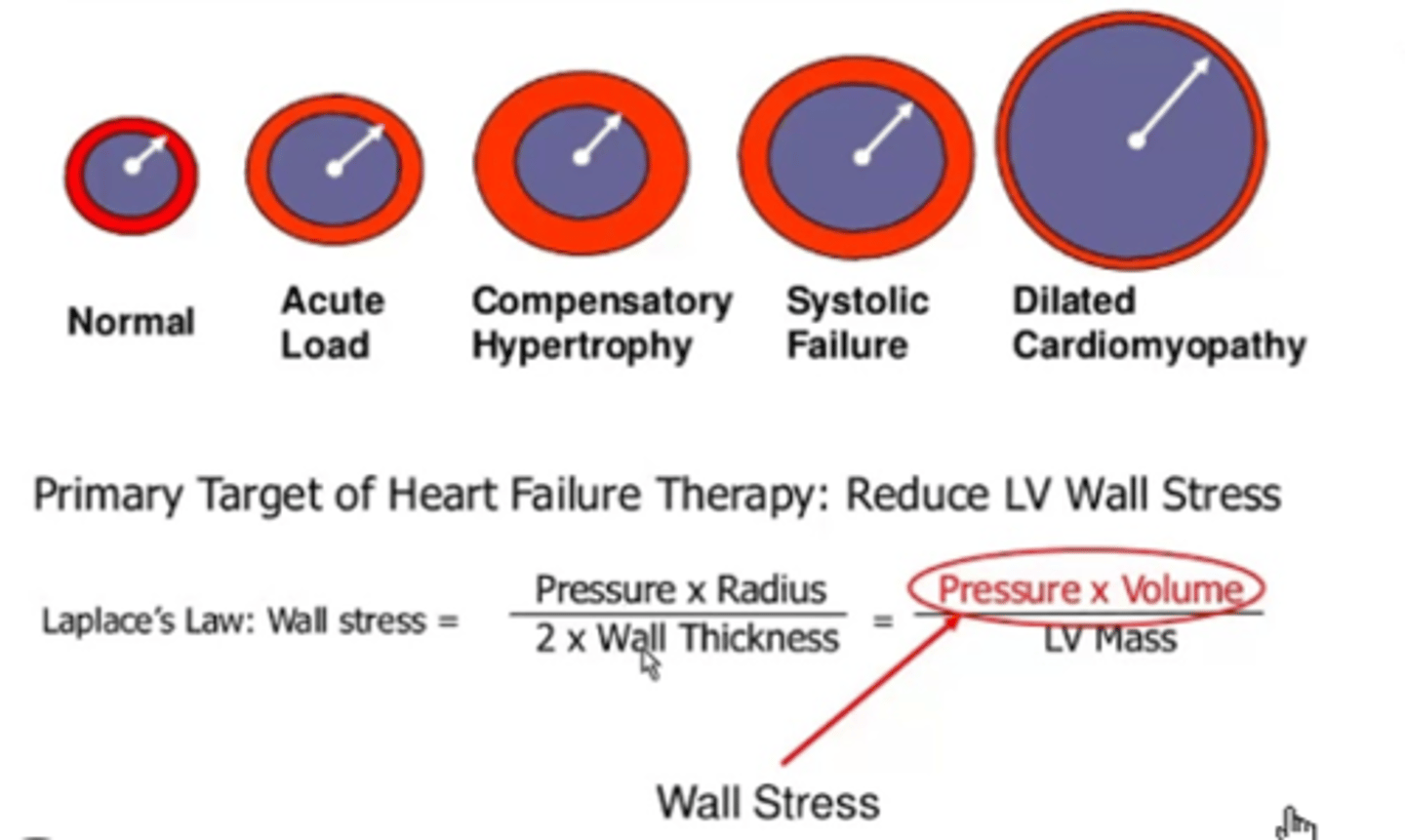
Elasticity question

Elasticity question (II)
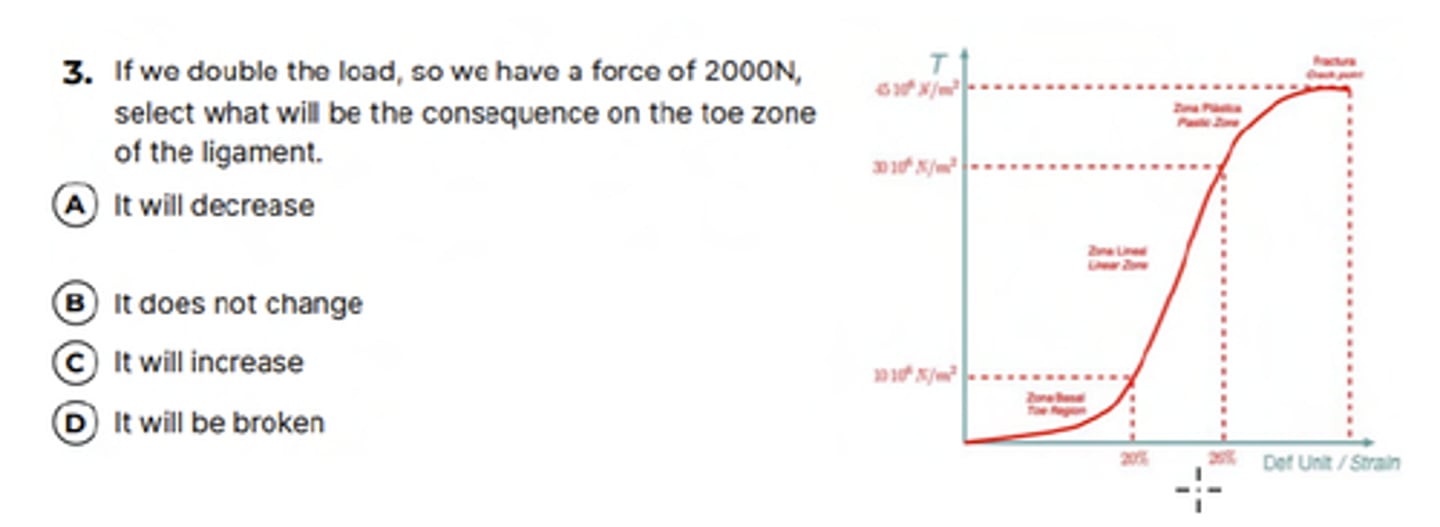
Elasticity question (III)
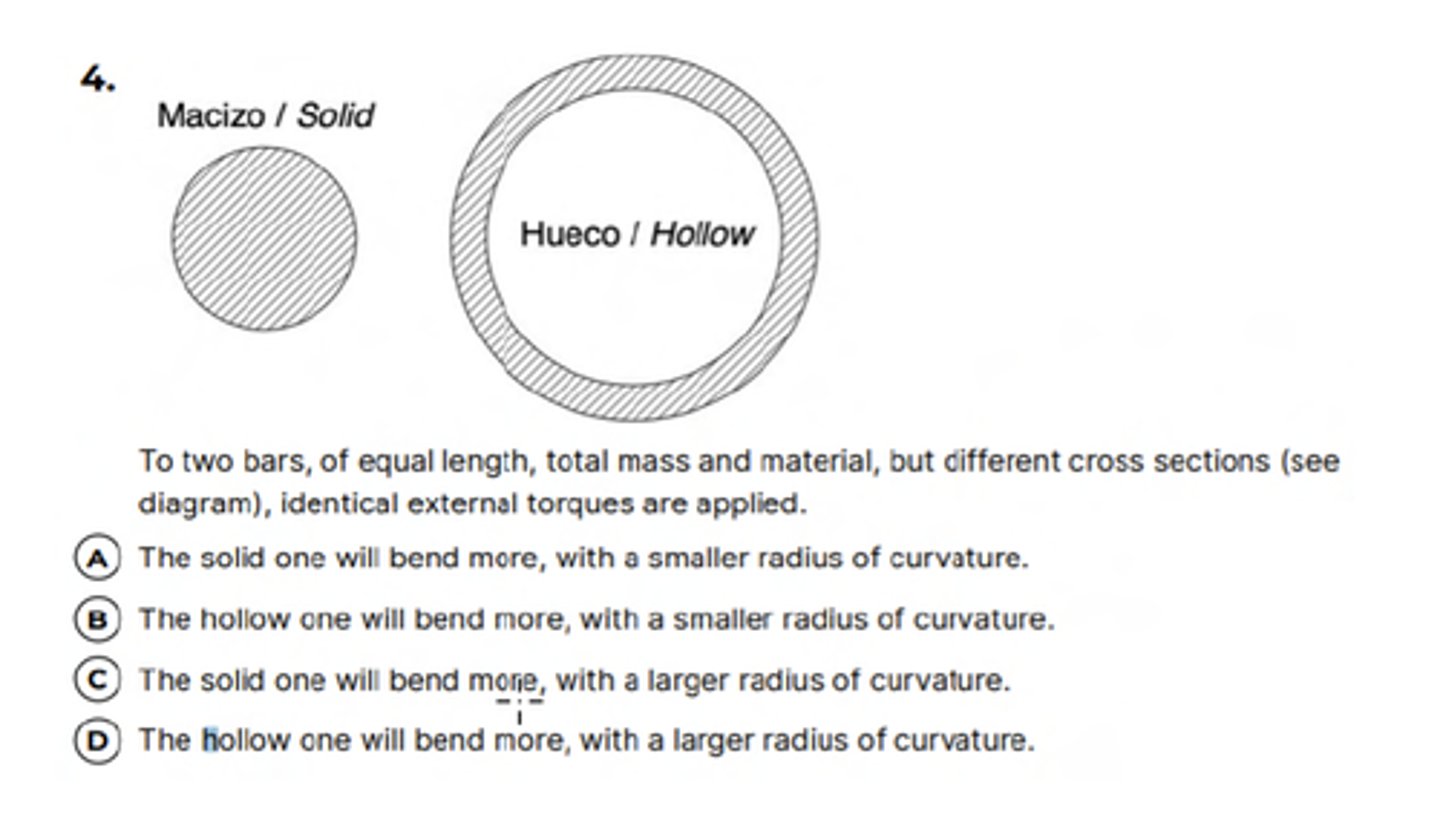
Elasticity question (IV)
